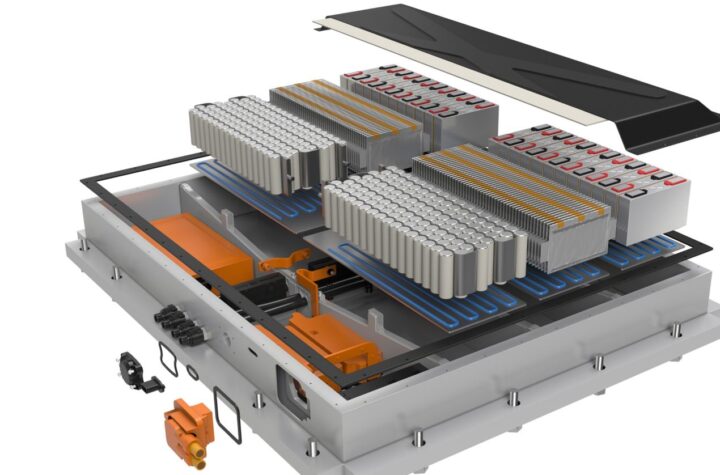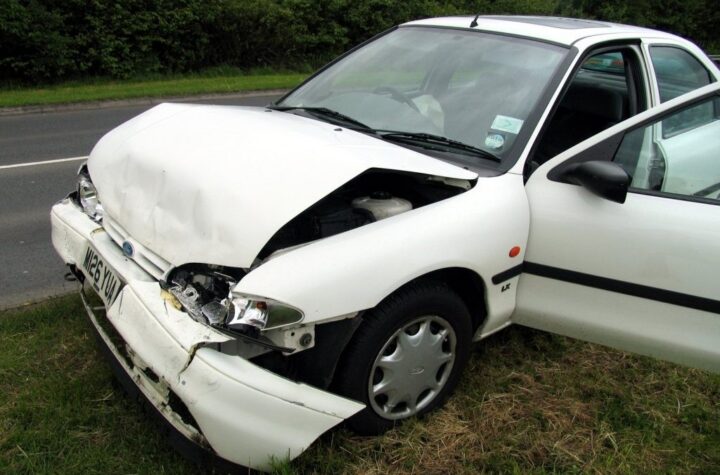
Michelin takes its Challenge Bibendum clean car road show to the world’s fastest growing automotive market.
Shanghai China was the site of the 2004 Michelin Challenge Bibendum, an annual event in its fifth year, designed to promote the research and development of clean vehicles. While the brain trust was locked behind doors at the College for Automotive Studies at Shanghai’s Tongii University, formulating ideas that will help China fuel its rapidly growing car park without permanently damaging the world’s ecology, or sucking up all of its oil supply, the hardware was lined up along the pit road at Shanghai’s brand-spanking-new Formula One racing venue, The Shanghai International Circuit, to compete in the two-day competition.
 |
| A fleet of real-world and experimental environmentally friendly vehicles line the pit lane at the Shanghai International Curcuit in China. |
Most all of the major OEMs were present in some form or another except for Honda, whose absence was made more noticeable in a racing facility lined with Honda billboards. The only Honda vehicle present was a European Accord 2.2 i-CTDi wagon that was part of the thirteen-car Bosch-sponsored clean-diesel fleet (including everything from a BMW 740d on down to the tiny Lancia Ypsilon). The Bosch fleet provided quite a bit of entertainment during the afternoon media drive sessions. The track was filled with the constant sound of squealing rubber as the international media tried valiantly to drive the tires off of everything on pit lane.
General Motors, who kicked off the week’s festivities early with a Monday morning press conference in downtown Shanghai, where they presented the city with a hybrid-electric bus, grabbed quite a bit of attention at the track with the full-size Chevrolet Silverado hybrid pickup. A continuous long line of European and Asian journalists as well as Chinese officials waited their turn to toss the massive American truck around the 3.4-mile race track.
Ford Motor Company entered six vehicles including two Escape hybrids and two fuel cell-powered Focus sedans. Ford also used one of the many Bibendum Challenge press conferences to present its 2.3L supercharged, hydrogen- powered internal combustion engine to the Asian media. Ford says the engine meets Tier 2 BIN2 emissions regulations with a 90 percent reduction in C02 emissions and could be ready for production in less than two years — the problem still being the lack of hydrogen stations to fuel the engines.
DaimlerChrysler, who was represented in the competition by two Mercedes AClass fuel cell vehicles, also chose to entertain the media during the ride and drive portion by bringing out both a diesel-powered Smart fortwo and forfour.
 |
| The HABO 1 runs on the same hydrogen peroxide you can pick up at the corner drug store. The H202 is stored in a tank in the back seat (top) and flows through a network of valves to a tank holding a catalyst (below). The heat from the chemical reaction creates steam pressure that drives a turbine. This unique set-up was installed in a Volkswagen Santana by a team from the Shanghai Institute of Space Propulsion. |
 |
 |
Audi and Volkswagen each brought a fuel cell prototype demonstrating their unique working relationship when it comes to fuel cell development. While both vehicles share the same basic powertrain architecture, that architecture is fitted to two very different vehicles. Audi has chosen the A2 platform while VW uses a Touran.
Marcus Romba of VW’s fuel cell development team, says that this allows them to test two different components at the same time to find the one that works best.
“The point is that we’ve got several grants in the Volkswagen group and we have to have demonstrators of all the brands, like Audi, VW and so on,” says Romba. “So Audi is able to build its own demonstrator, the A2, and we build our demonstrator. Everything that is not brand dependent is done together. But building demonstrators, a very brand-related activity, is everyone’s responsibility. From then until now we have increased reliability, safety oper- ational procedures and everything else.”
China entered 43 vehicles in competition including 20 two-wheeled vehicles (the first time for this category at Bibendum) and 15 buses. But the most interesting (and maybe most unusual) Chinese vehicle represented, what I think is the true spirit of Bibendum. Lin Qingguo, the head of rocket engine development at the Shanghai Institute of Space Propulsion, entered the HABO 1, a Volkswagen Santana that runs on hydrogen peroxide. The hydrogen peroxide is pumped from a tank mounted in the back seat and runs through a series of valves that control the flow rate. These valves feed to a small tank that holds a catalyst. When the H202 comes in contact with the catalyst, the chemical reaction produces heat (up to 700 degrees C) which creates steam that drives a turbine connected to the front wheels. The byproduct (noticeable after the vehicle’s first run) is steam — lots of steam.
If Bibendum proved nothing else, it demonstrated how far fuel cell vehicles have come. Still years away from mass marketing, these hydrogen-powered electric vehicles are every bit as competent as anything on the road today. A year ago, it would have been hard to picture anyone doing hot laps in a fuel cell car. But that’s just what the invited media did on Tuesday and Wednesday afternoon. I found myself behind the wheel of the GM/Opel Zaphira fuel cell car, waiting for permission to enter the track at the end of the pit lane. Permission granted, we accelerated down the end of the front straight, on the tail of a VW Jetta TDI. Though the Zafira fuel cell car may cost as much as a Formula One racer, it’s not nearly as fast, but still very well mannered. The ultralightweight construction and component placement make for a well-balanced car (though the electric steering is a little vague). And secondly, there’s only one gear. By eliminating the need to shift, you’re able to focus on hitting your marks, though the lack of a low gear does hurt acceleration coming out of the corners. At about half track we had caught our Chinese friend in the Jetta who, in his haste to get away, entered a left-hand corner a little too hot and way off line. A panicked foot on the brake locked up the Jetta’s wheels and sent it sideways across the track in a cloud of tire smoke.
Amazingly, after two afternoons of journalistic daring-doo, the multi-million-dollar, hydrogen-fireball wreck never happened. The future of th electric vehicle is still on track.
 General Motors Hywire fuel cell car refuels at a portable hydrogen station. Hywire was made available for media drives during Bibendum.  Unusual could probably be the theme of every Bibendum. The Courreges EXE is powered by lithium ion batteries. |  Elegant design is the thrust of the Volvo 3CC electric car. Volvo designers feel that people won’t drive clean cars if they don’t look good. |












More Stories
Your Guide to Filing a Car Accident Claim
Steps to Take Immediately After a Car Accident
What Makes SUV Cars More Prone to Accidents?